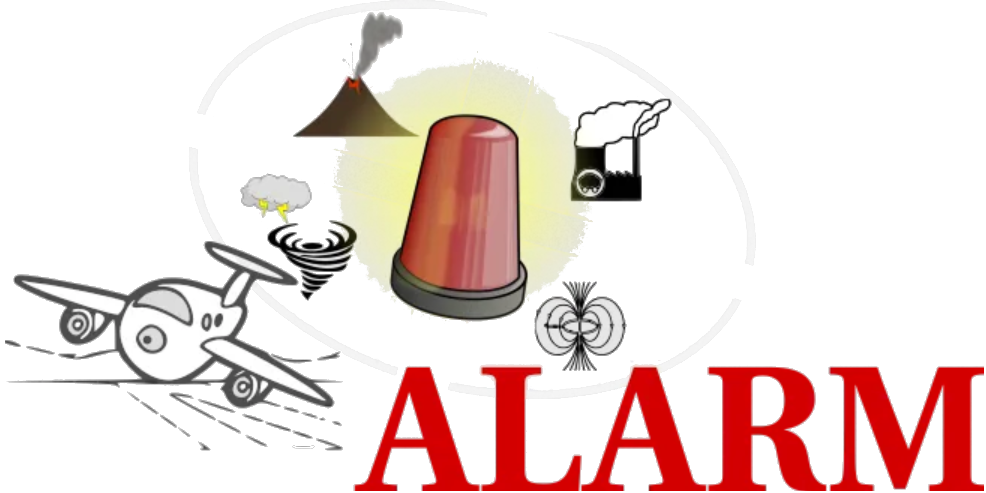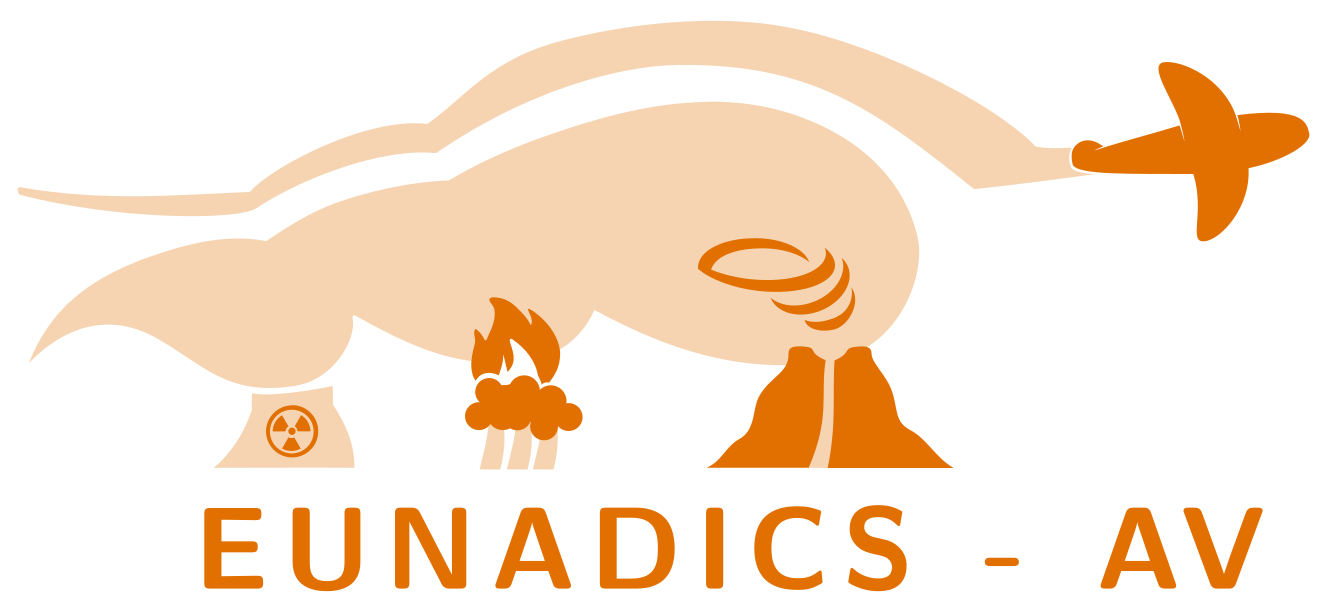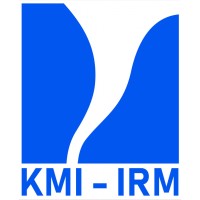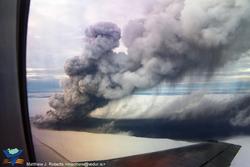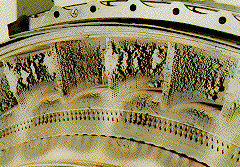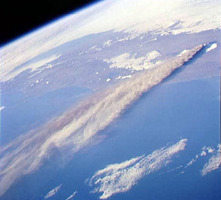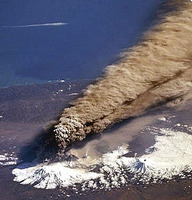|
|
Hazard to aviation of volcanic eruptionsVolcanic eruptions can emit large quantities of rock fragments and fine particles (ash) into the atmosphere, as well as several gases, such as CO, SO2, BrO, and water vapour. The rock fragments usually fall back to Earth quite quickly. The ash and the gases, however, can rise high up into the troposphere and even reach the lower stratosphere, up to 15 or even 20 km. The elevation reached by the material depends on the strength of the volcanic eruption, which in turn depends on the kind of volcano that erupts.The ash emitted by volcanic eruptions is a major hazard to aviation. The ash can, for example, severely damage the material of the aircraft, it can clog its sensors, it can limit the view of its pilots, and it can severely scratch ("sandblast") the windows of the aircraft. And when it enters the aircraft's engines, the ash can melt (it has a melting point of about 1100°C), as a result of which the engine may fail.
More than 90 aircraft have sustained damage after flying through volcanic ash clouds. In at least 7 cases this resulted in temporary loss of power on one or more of the engines during flight. In three cases, a Boeing 747 lost all four engines (1982 and 1989); fortunately the engines could be restarted once outside the ash cloud, but meanwhile the aircraft had dropped several km. In June 1982, for example, a British Airways Boeing 747 lost all four engines and suffered severe damage on encountering volcanic ash over Indonesia. The aircraft descended to 4&nbp;km before being able to restart some engines and make an emergency landing in Jakarta (see article in Wikipedia). Ash clouds in the lower stratosphere can be transported over very large distances, and thus pose hazards many days after an eruption. The ash emitted during the eruption of the Pinatubo volcano (1991) has damaged aircraft as far away from the volcano as 1000 km.
Every year there are about 60 volcano eruptions. On average the ash cloud of 10 of these eruptions reach flight level along major aircraft routes. The total cost of the damage sustained by aircraft due to volcanic ash clouds in the period 1982-2000 is estimated at 250 million US dollar. So far none of the incidents have resulted in fatal accidents or of people being injured. Of the gases emitted during a volcano eruption, sulphur dioxide (SO2) is in itself also a hazard to aircraft, as SO2 reacts with water vapour to form sulphuric acid (H2SO4), which is corrosive and can therefore scratch the paint and the windows of the aircraft, and it can create sulphate deposites in the engines. Depending on the kind of eruption, the SO2 may be inside the ash cloud, but it may also be above or below the ash cloud. In general the ash will drop due to gravity effects faster than the SO2, so that some distance away from the volcano the ash and SO2 clouds may be separated. From all these considerations it is clear that the safest procedure for aircraft is to stay clear of volcanic clouds. Pilots cannot always see an ash cloud (e.g. at night) and the ash does not show up on radar. And SO2 and H2SO4 are colourless gases, and therefore invisible. If it penetrates into the aircraft; sulphuric acid is noticed easily because of its strong smell, but then the aircraft is already inside the cloud. Hence, it is of major importance to know in advance where volcanic clouds are and what elevation they reach. Observations by satellite based instruments can assist in this. On the one hand, some satellite instruments can detect volcanic ash directly, though this technique is still under development. On the other hand, the detection of SO2 does not only show where SO2 clouds are, but can also help pinpoint volcanic ash clouds. In addition it is known that some volcanoes emit SO2 prior to a (major) eruption. This so-called passive degassing will not send the SO2 high up in the atmosphere, because the emissions are not explosive, and the emission will usually be only in low concentrations. It is quite difficult to detect low concentrations of SO2 near ground level or in the lower troposphere. But if it is possible to detect these emissions, it will provide additional information for early warning systems of upcoming volcano eruptions.
|
|||||||||||


